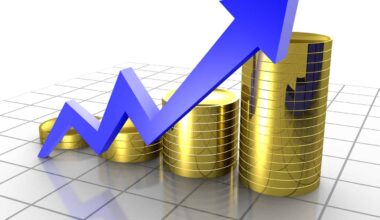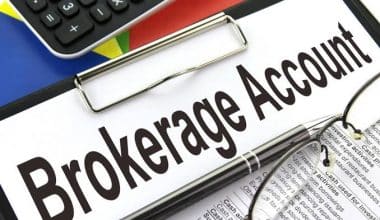Bondholders can assess their yields on bonds in a variety of ways, one of which is through effective yield. It is therefore defined as the overall profit or return on a bond received by an investor over the course of a year or a period of time (effective annual yield as the name implies). This guide explains effective annual yield comprehensively; how to find effective annual yield, and outlines the formula and calculator for finding effective annual yield.
What Is an Effective Annual Yield?
As defined in the introduction of this post, the effective annual yield is the overall profit or return on a bond received by an investor over a period of time. A bond’s effective yearly yield is different from the bond’s nominal yield or coupon rate. The nominal yield covers the interest rate par value that an investor receives from the bond issuer, while effective annual yield accounts for compound interest earnings or compound investment returns in addition to the interest rate par value. The effective yield is the return on a bond in which the bondholder reinvests all of the interest payments (or coupons) at the same rate.
What Is Nominal Yield?
The coupon rate on a bond is known as the nominal yield. It is, in essence, the interest rate that the bond issuer commits to pay bond buyers. This rate is guaranteed for the duration of the bond. It’s also known as the nominal rate or the coupon yield.
Because the nominal yield is a percentage based on the bond’s par value rather than the actual amount paid to buy the bond, it does not always represent the annual return. Buyers who pay a larger premium than the face value of a bond will get a lower actual rate of return (RoR) than the nominal yield, whereas investors who pay a lower discount would get a higher actual rate of return (RoR). It’s also worth mentioning that, when callable, bonds with high coupon rates are called first because they represent the issuer’s largest obligation compared to bonds with lesser yields.
Overview Of Effective Annual Yield
The effective yield is a calculation based on the coupon rate, which is the interest rate stated on a bond and expressed as a percentage of its face value. The issuer of a bond normally pays the bond investor coupon payments every two years. The investor will receive two coupon payments per year as a result of this arrangement. Divide the coupon payments by the bond’s current market value and you’ll get the effective yield.
Bondholders can calculate their effective yield by using this method. There’s also the current yield, which is a bond’s annual return calculated based on annual coupon payments and current price rather than face value.
The disadvantage of utilizing the effective yield is that it implies that coupon payments can be re-invested in a similar interest-rate transaction. This also implies that the bonds will be sold at par. This is not always practicable, given that interest rates fluctuate over time, falling and rising owing to various economic reasons.
Effective Yield vs. Yield-to-Maturity (YTM)
The yield-to-maturity (YTM) is the annual rate of return on a bond held to maturity. Convert the YTM to an effective yearly yield to compare the effective yield to the yield-to-maturity (YTM). If the YTM exceeds the bond’s effective yield, the bond is trading below par. The bond is selling at a premium if the YTM is less than the effective yield.
YTM stands for bond equivalent yield (BEY). If investors account for the time value of money in their calculations, they can get a more precise annual return once they know the BEY for a bond. An effective annual yield is what this is called EAY.
How to Find Effective Annual Yield?
The annual interest rate or rate of return that an investor is entitled to over a period of time is the effective annual yield. The measure of effective yield can be in a variety of ways:
- Bond coupon payments are calculated as a percentage of the par value of the bonds.
- By dividing the bond’s coupon payments by the bond’s current market value.
- Yield to maturity (YTM) is the rate of return earned by an investor or bondholder until the bond matures.
The effective yield is the measurement of the return on a bond after coupon payments are reinvested. Because coupons are paid twice a year, the effective yield is higher than the nominal or coupon yield.
The Formula for Effective Annual Yield
The formula for calculating effective annual yield is as follows:
i = [1 + (r/n)]n – 1
Where:
- i = effective yield
- r = nominal rate
- n = number of payments per year
Let’s see the following scenario as an example:
If an investor owns a $5,000 bond with face value and a 10% coupon paid twice a year in February and August, he will earn (10% /2) x $5,000 = $250 twice a year, for a total of $50 in coupon payments.
Effective Annual Yield Calculator
Let’s see the following scenario as an example:
If an investor owns a $1,000 bond with face value and a 5% coupon paid twice a year in February and August, a good calculator will calculate his earnings as (5%/2) x $1,000 = $25 twice a year, for a total of $50 in coupon payments.
So since the effective yield is a measure of a bond’s return when the coupon payments are reinvested. Due to the effect of compounding, his effective yield will be greater than the current yield or nominal yield if the bondholder reinvests the payment. So because interest is collected on interest payments, reinvesting the coupon will result in a larger yield.
Therefore the above investor will receive a slightly more than the yield of $50 yearly using the effective annual yield calculator.
Following the first example, the investor’s effective yield on his 5% coupon bond will be as follows:
i = [1 + (0.1/2)]2 – 1
= 1.0252 – 1
i = 0.0506, or 5.06%
Due to the bond’s semi-annual interest payment schedule, the bondholder will get two payments per year.
Also since compounding is taken into account in the above formula, the effective annual yield of 5.06% is clearly higher than the coupon rate of 5%.
Conclusion
This article explains how to calculate your effective annual yield on investments in a concise, exact, and easy-to-understand manner. People make investments in order to earn a profitable return on investment (ROI), but estimating it might be a difficult task for them. Thanks to our easy-to-understand calculator instructions and formula that will help you find your investment’s effective annual yield.
FAQs
How do you calculate effective annual yield?
Effective yield is calculated by dividing the coupon payments by the current market value of the bond. return based on its annual coupon payments and current price, as opposed to the face value.
How do i Find Effective Annual Yield?
Here is the formula to find your effective annual yield
i = [1 + (r/n)]n – 1
What is the annual yield for an investment that earns 10 compounded semi-annually?
A 10% interest rate compounding semi-annually is equivalent to a 10.25% interest rate compounding annually.
What is effective annual yield?
Effective Annual Yield (Annual Percentage Yield) The simple interest rate that gives the same amount of interest as a compound rate over the same period of time.






